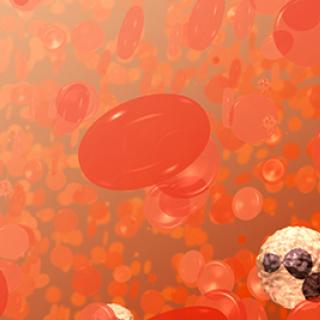Our Discoveries
Antibody-linked drug shrinks various types of tumors in preclinical study
A preclinical study by Center for Cancer Research investigators and colleagues shows that a drug guided by an attached target-seeking antibody can recognize cells infiltrating tumors, the tumor stroma, and cause various types of tumors to shrink, and in many cases, disappear. Their findings suggest that when stromal cells take up the ADC, they cleave the drug from the antibody and release it to kill neighboring tumor cells.
Read MoreActivated platelets can promote tumor cell invasion into healthy tissue
Pre-clinical studies conducted by CCR investigators and colleagues show that platelets, tiny cells that promote blood clotting, when activated by the CD97 protein on the surface of tumor cells, enable the tumor cells to invade healthy tissue and then metastasize. The study, published April 17, 2018, in Cell Reports, was led by Kathleen Kelly, Ph.D., Chief, Laboratory of Genitourinary Cancer Pathogenesis.
Read MoreNew study shows normally helpful natural bacteria may also trigger lupus
CCR scientists have discovered that a protein produced by bacteria that naturally inhabit our bodies may trigger the autoimmune disease lupus. The results of the study could unveil an entirely new set of drug targets for treating lupus and other autoimmune diseases. Read more…
Read More

